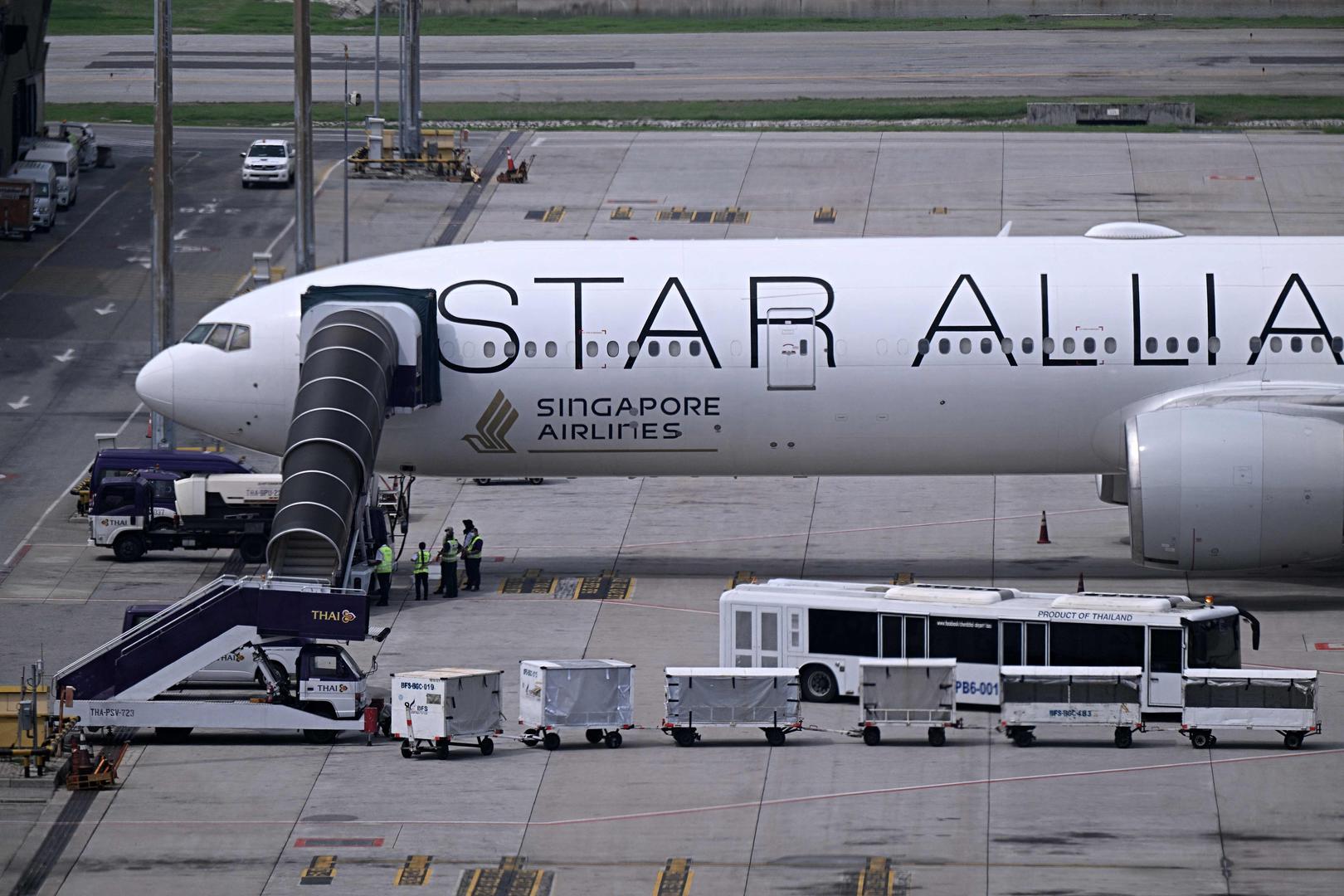On May 21, Singapore Airlines flight SQ321 experienced violent turbulence and made a forced landing at Bangkok Suvarnabhumi International Airport. According to CCTV News, the incident has resulted in two deaths and about 30 injuries.
 ▲ On May 21, 2024 local time, a Singapore Airlines passenger plane made an emergency landing at Suvarnabhumi Airport in Bangkok, Thailand. Pictorial Vision China
▲ On May 21, 2024 local time, a Singapore Airlines passenger plane made an emergency landing at Suvarnabhumi Airport in Bangkok, Thailand. Pictorial Vision China Toby Pearl was sitting in the 43rd row economy class seat on the flight from London to Singapore at the time of the incident. He recalled: "When the turbulence hit, I and many other people were thrown into the air and hit the roof... It felt like we had crashed. I really thought the plane was going to crash. The glass behind the cabin crashed. Everything was in a mess. Personal belongings, food and even people were scattered around the cabin."
Pearl, a 21-year-old British tourist, is going to Australia for a one-year backpacking adventure. He said that when the first wave of chaos subsided, the crew and passengers began to provide first aid for those in need on the plane. Some doctors and a nurse among the 211 passengers stepped forward at this time.
Pearl said that he once worked as a medical care support staff in a hospital, so he has relevant experience. He immediately launched cardiopulmonary resuscitation for a passenger in the cabin.
According to the airport rescue staff, 7 people were seriously injured and were sent to the hospital, while others will undergo relevant medical examinations and wait to be sent to Singapore. In an interview, Pearl said that after waiting for the medical examination results, passengers who are generally healthy will continue their journey. However, "everyone is still in shock and fear, and this will definitely make you anxious about flying."
Before the accident, the twin channel Boeing 777 was cruising at an altitude of 37000 feet (11200 meters), two hours before landing in Singapore, and everything was in order.
Flight SQ321 took off from London Heathrow Airport at 10:38 p.m. local time on May 20, and arrived at Singapore Changi Airport after 13 hours. Singapore Airlines takes off from London four times a day, using the Boeing 777 twice and the Airbus A380 superjet twice. According to the airline's data, the nationalities of the top three passengers are 56 from Australia, 47 from Britain and 41 from Singapore.
The plane flew over Eastern Europe, crossed the Black Sea into Georgia, flew to Tajikistan, and then flew south across the Indian subcontinent. When the plane flew over Myanmar, the flight data showed that the plane was bumpy up and down, and it recovered to the previous cruise altitude after about four minutes.
Shortly thereafter, the plane declared a state of emergency and landed in Bangkok at about 3:45 p.m. local time.
Although high-altitude turbulence is not uncommon, it is not common to cause deaths. This phenomenon may be caused by rising hot air or cumulonimbus clouds often accompanied by gusts and storms. At a higher altitude, the aircraft may encounter sudden clear air turbulence caused by the difference of air mass velocity.
Between 2014 and 2018, European aircraft manufacturer Airbus reported about 240 serious turbulence events. According to a briefing document on this phenomenon, 30% of long haul flights and 12% of short haul flights had such incidents, resulting in injuries to passengers and crew.
The airline suggested that passengers should always wear their seat belts. Hassan Shahidi, CEO of the Flight Safety Foundation, said: "During the flight, more than 75% of the injuries occurred at 30000 feet (10000 meters) or above are related to turbulence, because at this height, you will encounter unpredictable clear air turbulence. The aircraft is designed to withstand this kind of impact, but when passengers do not wear seat belts, they cannot get any protection. "
Fan Xu, a Red Star journalist
Edited by Pan Li and directed by Wei Kongming



















